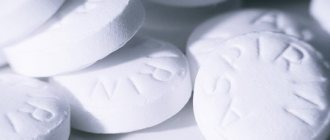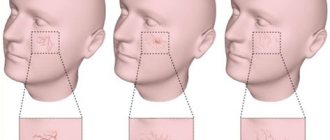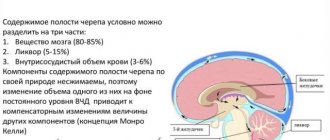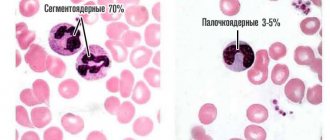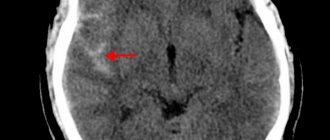According to statistical studies, headaches are considered one of the most severe. Second only, perhaps, to dental. Localization can say a lot about the essence of the disorder. The nature of the discomfort varies. The same applies to the intensity of the disorder and the symptom.
If there is pressure in the temples, we are mainly talking about pathological processes of various kinds. Not always about complex and dangerous things. Treatment is prescribed according to need.
What do you need to know about such a manifestation when it poses a threat to health and life? It is worth understanding the issue in more detail.
Natural causes
Mostly there are pathological moments, but sometimes there are external factors that cause the disorder.
Changes in weather conditions
Meteosensitivity is considered one of the main causes of the manifestation that is discussed in the material.
The deviation begins long before there is a clear change in weather conditions. It is mainly associated with changes in temperature, barometric indicators, and atmospheric pressure.
The pathological sign is determined by severe pain, discomfort in the temples, dizziness, and a feeling of heaviness in the head. It is necessary to correct the condition as quickly as possible to return to normal.
How is this type of headache treated? The cause is mainly vascular. There is a sharp spasm of the arteries of the brain, although there is no obvious danger.
Special drugs are used that combine the effects of an analgesic and antispasmodic. For example, Spazgan, Spazmalgon and similar products. One or several tablets are enough.
In the long term, it is necessary to increase the body's endurance. So-called adaptogens are prescribed, which help build resistance to harmful external factors.
Height change
This moment is encountered quite rarely. For example, when climbing mountain peaks. Although there are simpler reasons. Another option is moving from a low-lying area to a high-altitude area.
Even minor changes can cause pronounced tightening and pressure in the temples. This will be noticeable, for example, when moving from the central part of Russia to the Ural region or other high-mountain regions. Moreover, the symptom will be noticeable with sudden changes in altitude.
The treatment is quite simple. The same medications are prescribed: antispasmodics and analgesics in combination. For example, products based on metamizole sodium. Anti-inflammatory non-steroidal origin such as Nurofen and similar ones.
For long and frequent trips, adaptogens are prescribed. It is important that the patient does not experience side effects, therefore medications are not prescribed in large dosages and for a long course. At least right away.
The issue should be discussed with a neurologist.
Tension headache
It is localized just in the temple area and has a compressive nature. Unpleasant sensations develop against the background of long and hard work. For example, at the computer. The same goes for intense mental stress. Stressful situation.
It makes sense to monitor at what point pressure develops in the temples. Only after this can we talk about effective control of the condition. Especially if the discomfort is repeated.
The treatment is simple. You need to rest properly in a quiet place. A few hours is enough. Before this, you can take a non-steroidal anti-inflammatory tablet or, better, an analgesic in combination with an antispasmodic.
In the future, you need to increase the body's resistance and learn relaxation techniques. If you have a sedentary job, you should take short breaks of a few minutes every hour. Get up. Charging is important.
Prolonged fasting
The body responds negatively to a long period of lack of food. Especially with an inadequate diet.
Moreover, negative phenomena will be noticeable if you completely refuse food. For example, when observing religious fasts or forced fasting.
In such a situation, the only way to correct the condition is to eat. In small quantities so as not to overload the gastrointestinal tract.
It makes sense to stick to a light diet. Abruptly stopping food, as well as observing fasts, must be strictly under the supervision of a specialist. At the very least, a therapist. It is even better for a gastroenterologist to participate in the work.
Traveling on an airplane
According to statistics, with a single movement, pressure in the temples occurs in 5% of patients; this is associated with a sharp change in altitude, air temperature, and atmospheric pressure.
For the same reason, people on an airplane also experience other phenomena: for example, their ears become blocked and they have a headache.
This is quite normal, although unpleasant for patients.
With constant air travel, the probability of manifestation increases to 10-20% and even higher. This is due to frequent negative effects on the human body.
No recovery is required as such. Because the deviation is temporary and disappears a few hours after the plane lands.
If necessary, take an antispasmodic tablet to return the blood vessels to normal. For example, Spazmalgon will do. Or similar drugs.
Next, adaptogens are taken as needed to restore the body’s functioning and increase resistance to negative external factors.
Drinking coffee, drinking tea
Both of them are tonic drinks, which is why an increase in blood pressure is possible. Even in healthy people.
With a tendency to surges in blood pressure and hypertension, pathological phenomena are possible.
If there is pressure on your temples, headaches and nausea, you need to stop drinking tonic drinks as soon as possible and switch to chicory and herbal teas. On the other hand, it is important to consult a specialist in neurology and/or cardiology.
Treatment as such is not necessary. It is enough to stop drinking drinks and normalize your diet. Consulting doctors will also not be superfluous, since there may be a pre-existing condition of hypertension.
Natural Peak Hormonal States
Occurs mainly in adolescents and women. In the early years, when the body is going through changes, pressure in the temples is quite normal.
Puberty is accompanied by frequent headaches. It is important to monitor the person’s condition during this period. Because other pathological causes of headaches and discomfort are also possible. There are other factors for the development of pressure in the temples:
- Pregnancy. In case of disruption of normal brain nutrition. Ischemia during gestation is quite common, but does not always pose a danger to health and life.
- Menstrual cycle. At the initial stage, during PMS, headaches are possible.
- Climax. Hormonal changes.
The reasons are quite varied. There are others too.
Treatment of headaches in the temples and forehead
Treatment for headaches at the Clinical Brain Institute is prescribed individually. The scheme will include steps aimed at eliminating both the root cause and symptoms of the disease:
- painkillers - help with mild headaches, can be found in any home medicine cabinet;
- antibiotic therapy is the main stage of treatment of inflammatory diseases of the eyes, brain, and inner ear;
- drugs to normalize blood pressure in case of hypotension or hypertension - they are often taken in a course to prevent acute attacks;
- additional techniques effective for diseases of the cervical spine: physiotherapy, exercise therapy;
- surgical intervention - is prescribed only in cases where conservative therapy is ineffective (for neoplasms, aneurysms, cataracts and other pathologies).
At home, it is important to follow all doctor’s recommendations and take prescribed medications on a precise schedule. In addition, it is necessary to follow the principles of proper nutrition and monitor your weight - this will help avoid chronic vascular diseases. For headaches, full sleep and a cold compress on the forehead and temples are recommended.
If you have a headache in the frontal region and temples, this can either be a sign of dangerous diseases or a consequence of ordinary fatigue. The Clinical Brain Institute specializes in the diagnosis and treatment of such disorders. The main advantages are modern equipment for examinations and analyses, high qualifications and many years of experience of specialists.
Causes associated with diseases
What disorders and diseases can cause the symptom and feeling of pressure in the temples?
Migraine
Neurological disorder. The exact origin of the pathological process has not yet been fully studied. Therefore, effective methods of etiotropic treatment have not been created.
It is based on a disorder of vascular regulation, as far as is currently known. The symptoms of migraine are specific: pressure in the temples, pain in the head on one side. Although there are known cases of diffuse spread of discomfort.
Photophobia and intolerance to loud sounds are also present. Aura in the form of flickering images before the eyes. The frequency of attacks varies. On average, up to 6-10 times a month. At the same time, each such episode lasts up to several hours or even days.
The treatment is specific. It involves correcting the condition of blood vessels. Antispasmodics and analgesics are prescribed. Also special anti-migraine medications.
Recovery presents certain difficulties. On the one hand, because the causes of the disease are not fully known. On the other hand, due to the resistance of the pathological process itself.
Therefore, the correction may take months until the condition is brought under control.
Some poisonings
Intoxication often causes pressure in the temples. Especially often we are talking about lesions of several types.
- Prolonged inhalation of carbon monoxide can cause severe headaches. Discomfort is accompanied by nausea and vomiting. Hallucinations and other neurological problems are possible.
- Poisoning with cadmium, arsenic, lead, mercury. In this case, pressure in the temples is the least of the problems. Disturbances in the functioning of the central nervous system occur. There is headache, heaviness, weakness, and tissue bleeding. There are breathing problems.
Regardless of the type of poisoning, treatment should begin as quickly as possible. Correction is carried out based on the essence of the pathological process.
A specific antidote is prescribed. Adaptogens and vitamin-mineral complexes are also indicated.
It is important not to delay therapy. Because death is possible. Especially in case of massive poisoning. When there is a lot of active ingredient.
Taking certain medications
The symptom is provoked by a large group of drugs. For example, antiepileptics, non-steroidal anti-inflammatory drugs, glucocorticoids.
The causes of pressure in the temples are an increase in intracranial or blood pressure. The main method of correction is refusal of a specific drug. The one that provokes the violation.
At the same time, it is absolutely impossible to exclude drugs without permission. Problems are possible up to an exacerbation of the underlying pathological process. This is dangerous to health and life.
Therefore, all corrections to the treatment regimen are carried out strictly under the supervision of a specialist.
Hypertonic disease
Chronic cardiac disorder. The basis is an increase in blood pressure.
At the initial stages - unstable. Then - persistent, which does not decrease without special drugs. The reasons are not fully known. There is a high probability that a group of factors is at work.
On the one hand, there are disturbances in central regulation. On the other hand, there are problems with hormonal levels and the concentration of specific substances. For example, renin, angiotensin.
There are situations when the cause of the pathological process is kidney disease. Pyelonephritis, failure and other issues.
The symptoms are quite typical. The temples hurt, there is pressure on the eyes, there is intense discomfort in the head, usually spread throughout the entire skull.
Nausea, vomiting, heaviness, weakness and drowsiness or, conversely, psychomotor agitation are possible.
Therapy is complex and lengthy. Advanced forms of the pathological process require lifelong correction. Several types of drugs are prescribed:
- Beta blockers. Metoprolol and similar.
- Calcium antagonists. They do not allow ions of the substance to penetrate through the vessels quickly enough to provoke a spasm of the arteries.
- ACE inhibitors. The production and action of angiotensin-2 slow down. The same substance that causes a narrowing of large blood supply structures. They are also used for the prevention of stroke and heart attack.
- Sartans. Drugs with similar effects. Increases vascular conductivity and elasticity of arteries and small structures.
- Means with a central effect. Used to quickly relieve attacks of high blood pressure.
There are no special medications for immediate correction of headaches. It is important to lower your blood pressure levels.
For quick recovery, such drugs as Captopril, Moxonidine are suitable. The issue is resolved under the supervision of a cardiologist.
Brain tumors
Neoplastic processes of the central nervous system are dangerous in themselves. Because the space in the skull is limited. Compresses the temples due to compression of brain tissue.
The factors under which the pathological process develops are varied. According to research by specialists, disorders are mainly associated with family history. Negative heredity provokes an increased likelihood of neoplastic disorders.
Risks also increase against the background of radiation damage and the influence of ionizing radiation. The environmental factor also plays a role. The exact origin of the pathology has not yet been fully studied.
Symptoms are quite nonspecific. Symptoms of a brain tumor include:
- Pressure in temples. Intense.
- Painful sensations. Extremely strong in advanced stages. They are not relieved by any drug other than narcotic analgesics.
- Heaviness.
- Nausea.
- Vomit. Sometimes indomitable.
- Hallucinations.
- Focal manifestations. From the part of the brain that is involved in the pathological process.
Treatment is urgent. Under the supervision of a neurosurgeon. Typically, this involves surgically removing the neoplasia. Radiation and chemotherapy are prescribed as needed.
Benign structures are eliminated surgically. Further correction is carried out according to indications. Monitoring the postsurgical condition is possible using MRI of the brain with contrast.
Infectious diseases
Heterogeneous in nature. Caused by three groups of pathogens.
- Bacteria.
- Viruses.
- Fungi.
All of these types of pathological processes are accompanied by intense symptoms.
For example, there are:
- Headache.
- Vertigo. Feeling of the surrounding world spinning before your eyes.
- Impaired coordination of movements.
- Nausea.
- Weakness.
- Increased body temperature.
- Vomit.
- Drowsiness and feeling of exhaustion.
The cause of pressing pain in the temples, as well as other signs of the disorder, is intoxication of the body with waste products of bacteria and the breakdown of its own cells. Hence the pronounced clinical manifestations.
Treatment is carried out based on the essence of the phenomenon. For example, in case of bacterial infection, loading doses of broad-spectrum antibiotics are used. Or narrowly targeted medications.
Viral forms of the disease require mandatory stimulation of the immune system. Introduction of an interferon substance from the outside.
Fungi are eliminated using fungicides. There are plenty of options. Plus, vitamin and mineral complexes are required.
Hormonal disorders
{banner_banstat9}
Specific background violations. For example, during pregnancy and other conditions, but at the level of pathology.
Therapy depends on the specific abnormality. It is mainly carried out with the help of special replacement drugs. Hormonal drugs of artificial or natural origin. The disorder is especially common in women.
The causes of pressure in the temples are varied and almost always require etiotropic correction. That is, eliminating the very cause of the pathological process.
Prevention
Following these recommendations will help prevent temple pain:
- get proper rest and sleep;
- maintain a daily routine;
- avoid stressful situations;
- to refuse from bad habits;
- avoid overwork;
- refrain from consuming strong tea and coffee drinks.
Walking in the fresh air, proper nutrition, exercise, regular, feasible physical activity will reduce the likelihood of pain in the temples and the development of hypertension to a minimum.
Pain in the temples is not always a sign of hypertension and high blood pressure. However, in case of frequent painful attacks accompanied by other symptoms characteristic of this disease, it is strongly recommended to consult a doctor and undergo full treatment!
Necessary examinations
{banner_banstat10}
The list is quite large. Among the techniques:
- Consultations with specialists. A therapist, a neurologist and a cardiologist at a minimum. Further according to need.
- Oral questioning and history taking as a logical continuation of the previous point.
- General examination of blood and urine.
- Hormone tests. Including the reproductive, thyroid and adrenal glands. Also the pituitary gland.
- ECG.
- Echocardiography.
- Blood pressure measurement is routine.
- 24-hour Holter monitoring.
- Encephalography.
- MRI of the brain. With and without gadolinium contrast enhancement.
Pressure in the temples is almost always a symptom of illness. A thorough examination is necessary. Treatment is prescribed according to need.
